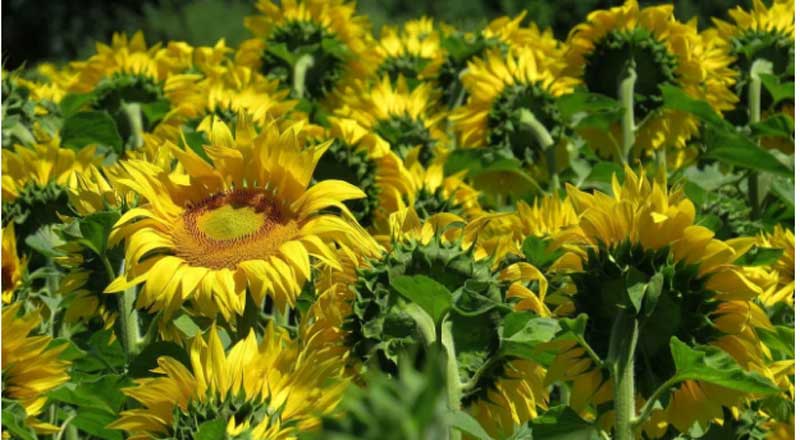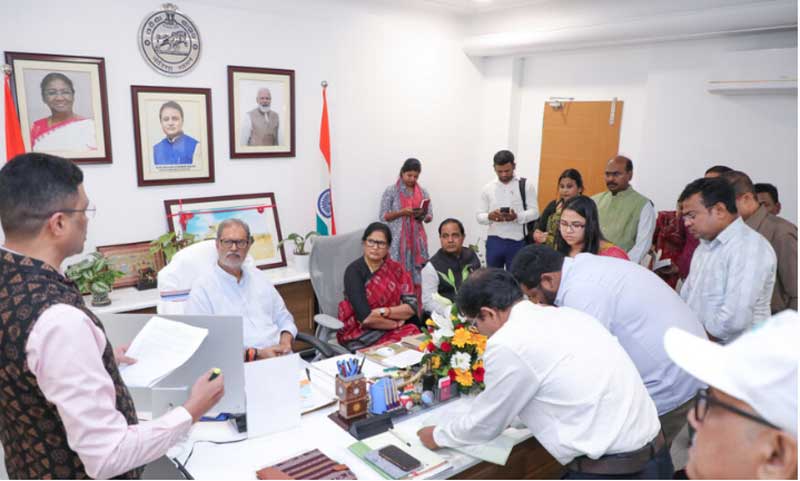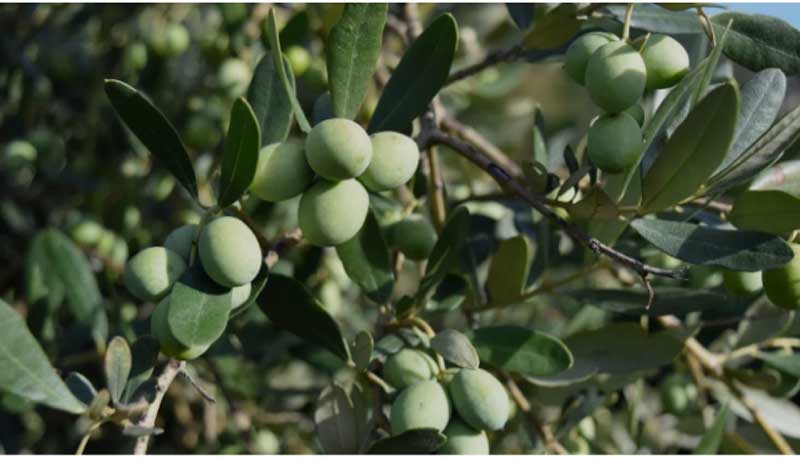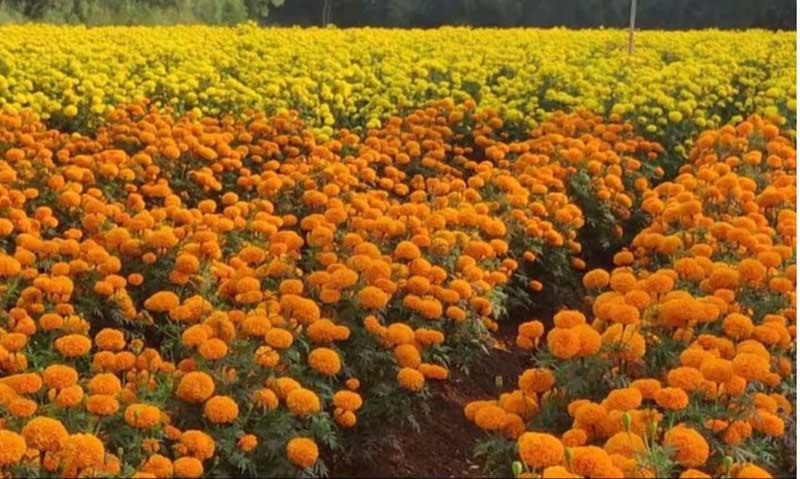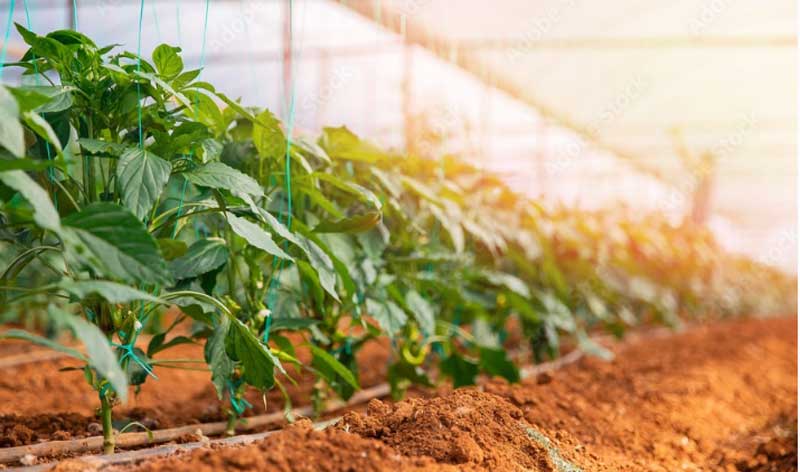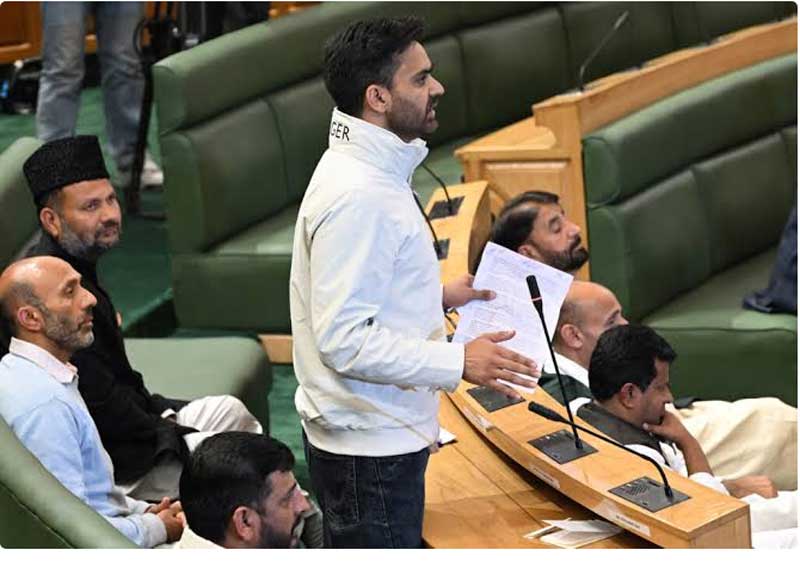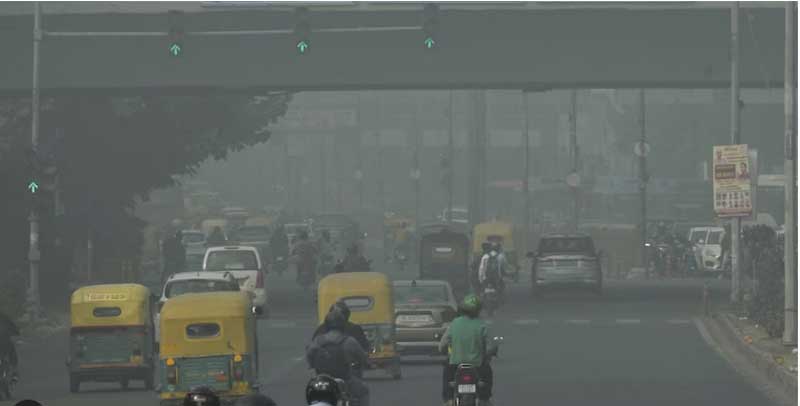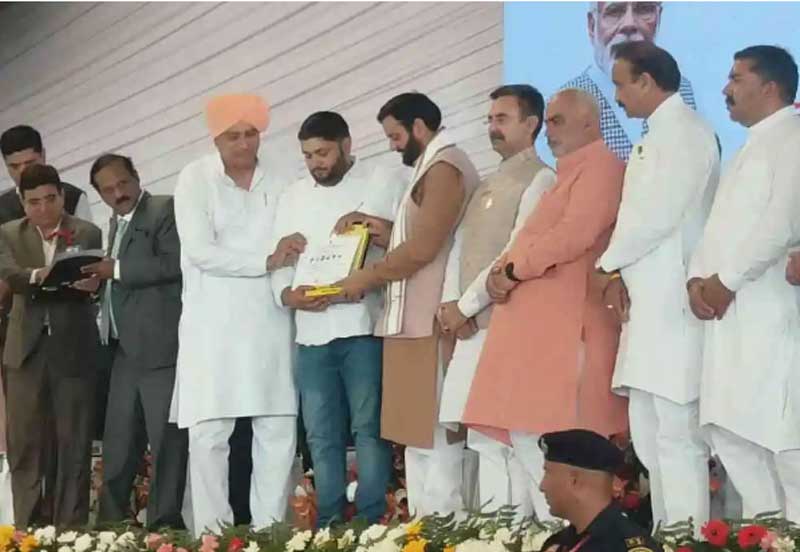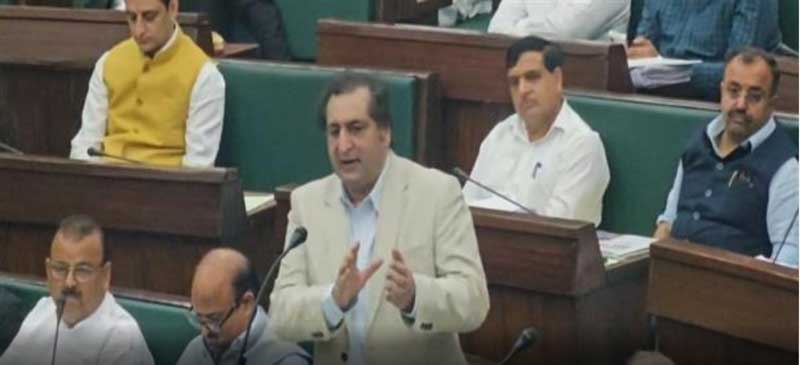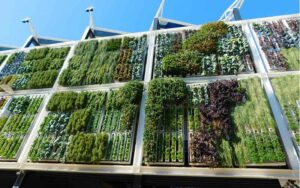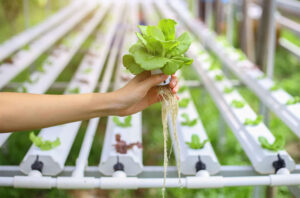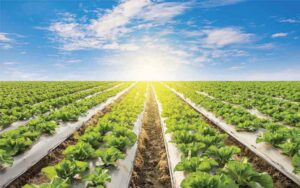Basics of Hydroponics
Mr. Vimal Kaul
This article will answer many questions that may be coming in beginners mind very frequently about hydroponics farming
This article will focus on three things:
1.Hydroponics- what it should mean to a fresher,
2.Fundamental difference in hydroponic cultivation and soil cultivation
3.Challanges involved in hydroponics.
Hydroponics is basically a Greek word, Hydro means water and ponics means working with. So, hydroponics means working with water.
There are three very common terms that we come across while discussing hydroponics. These are soilless culture, hydroponics or NFT& aeroponics.
Soilless culture is a cultivation technique by which plants are grown without soil in cocopeat or any other growing media.
Hydroponics or nft or nutrient film technique is a technique of cultivation where in there is no growing media. Instead plant roots are grown in nutrient solution.
Aeroponics is a technique of cultivation where there is no growing media instead roots of plants are sprayed with nutrients frequently.
Now let us understand the process of hydroponics in a very simple manner.
Presume we have three plants similar in each and every respect.
First one grown in soil, second one being grown cocopeat or soilless culture and third one being grown in water or hydroponics.
Now what has changed from plant 1 to plant 2 to plant3. Practically nothing except the growing media in which plants are being grown. Now put these three plants in three different greenhouses with same inside conditions i.e Temperature 25°C and relative humidity 50%.
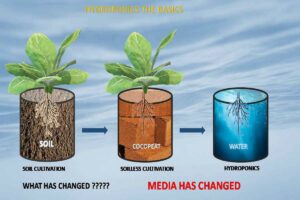
Now let us ask few questions to ourselves.
1. Are these three plants going to behave differently in similar greenhouse conditions? No, because plant physiology does not change with change in growing media.
2. Are these plants going to change their behaviour because their roots are in different media? No, because plant does not change its process of growing with change in growing media.
3. The only change happening because of change of media will be felt by roots of plan but still roots are not going to change their process of working.
So here, we need to understand about how to handle the roots of plants with relation to growing media and how to create a proper balance between plant requirements and the capacity of growing media.
Hence, hydroponics is all about handling the rootzone of a plant with relation to growing media.
The advantages of hydroponics can be summed up as following:
Higher yield, uniform quality, better crop control, longer crop life, controlled fertigation, no soil diseases. Last but not the least 50-60% water saving as compared to soil cultivation.
But as we know nothing comes without challenge so let us know the challenges involved in hydroponics.
Small root volume, less nutrient storage, no buffering capacity in growing media—pH, EC control, salt accumulation, and water quality are real challenges of hydroponics and need continuous monitoring.
And to do it in best possible manner we should have full knowledge about the media, its purpose and properties. The purpose of growing media may be, to provide support to plants and roots. But a clear understanding of its properties both physical and chemical are a must for a hydroponic grower.
Maintaining a balanced water, nutrient and oxygen supply to rootzone during all the three stages of crop growth is critical to produce healthy plants and manage healthy rootzone. But here are some more important parameters like concentration of sodium, concentration of chloride, concentration of nitrate. If these monitored efficiently it can definitely ensure a very healthy harvest in hydroponics. Good quality reliable instruments are a must for hydroponics. Doing hydroponics without these is suicidal.
It is important to create at least two sample collection check points in each and every hydroponic farm. These should be fixed and any sample collected from these should represent the entire farm in true sense.
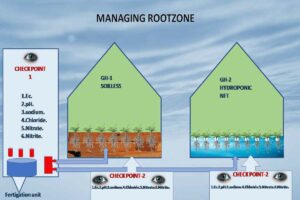
One check point at fertigation inlet and other check point at drain coming out of bags or from recirculatory system. Collect nutrient solution samples at these two check points, with the help of reliable instruments. And compare the two set of readings and take an action.
If you see an increase in pH the availability of phosphorus and micronutrients will get affected immediately. To reduce the pH add more acid or increase the ratio of ammoniacal nitrogen in nutrient solution.
If you see an abnormal increase in EC it will result in the development of salanity hence reduced movement of water towards plant rinse the medium with plain water.
If you see increase in sodium and chloride concentration rinse the media with plain water to bring it down.
Any increase in nitrate content is an indication of poor uptake by plants and vice versa increase or decrease the fertigation accordingly.
Nitrite is poisonous to plants, its presence in rootzone is an indication of less dissolved oxygen in irrigation water, rinse the media and increase the interval between irrigation cycles to give sufficient time to roots for respiration, use chilled water to increase oxygen content of irrigation water.
If managed well these will definitely help you in harvesting a good and healthy crop.

